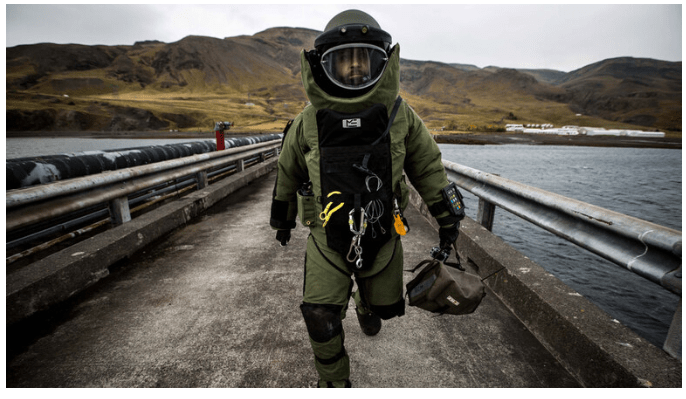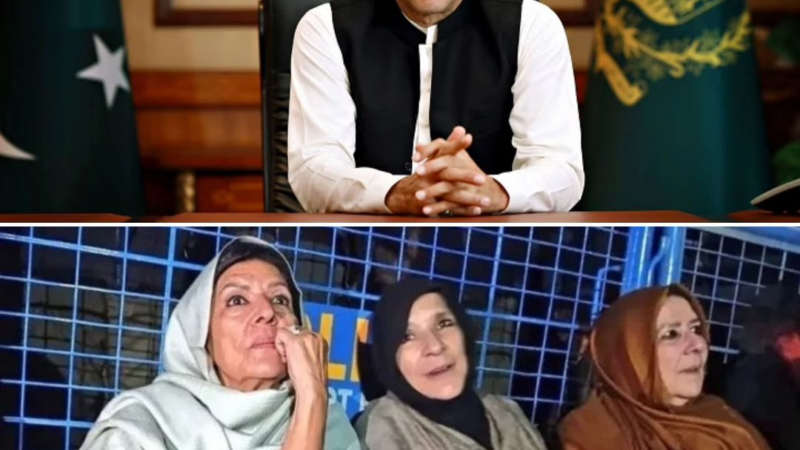Countering Terrorism

Terrorism is the most direct asymmetric threat to the security of the citizens of NATO countries, and to international stability and prosperity. A persistent global issue that knows no border, nationality or religion, terrorism is a challenge that the international community must tackle together. NATO will continue to fight this threat with determination and in full solidarity. NATO’s work on counter-terrorism focuses on improving awareness of the threat, developing capabilities to prepare and respond, and enhancing engagement with partner countries and other international actors.
In support of national authorities, NATO ensures shared awareness of the terrorist threat through consultations, enhanced intelligence-sharing and continuous strategic analysis and assessment.
Intelligence reporting at NATO is based on contributions from Allies’ intelligence services, both internal and external, civilian and military. The way NATO handles sensitive information has gradually evolved based on successive summit decisions and continuing reform of intelligence structures since 2010. Since 2017, the Joint Intelligence and Security Division at NATO benefits from increased sharing of intelligence between member services and the Alliance, and produces strategic analytical reports relating to terrorism and its links with other transnational threats.
Intelligence-sharing between NATO and partner countries’ agencies continues through the Intelligence Liaison Unit at NATO Headquarters in Brussels, and an intelligence liaison cell at Allied Command Operations (ACO) in Mons, Belgium. An intelligence cell at NATO Headquarters improves how NATO shares intelligence, including on foreign fighters.
NATO faces a range of threats arising from instability in the region to the south of the Alliance. NATO increases its understanding of these challenges and improves its ability to respond to them through the ‘Hub for the South’ based at NATO’s Joint Force Command in Naples, Italy. The Hub collects and analyses information, assesses potential threats and engages with partner countries and organisations.
Recognising the many different roles that men and women may play in terrorist groups, NATO is also seeking to integrate a gender perspective in all its counter-terrorism efforts, including training and education for Allies and partners, as well as policy and programme development. Likewise, the Alliance seeks to address all pillars of the human security agenda (including protection of civilians, preventing and responding to conflict-related sexual violence, countering trafficking in human beings, protection of children in armed conflict, cultural property protection) in its counter-terrorism work.
Secretary General Jens Stoltenberg announced the position of Special Coordinator for Counter-Terrorism in October 2023. The Special Coordinator for Counter-Terrorism serves as the high-level focal point for all of NATO’s work on counter-terrorism and ensures that NATO’s response to terrorism remains strong, effective and coherent. The current Special Coordinator is Assistant Secretary General for Operations Tom Goffus.
Capabilities
The Alliance strives to ensure that it has adequate capabilities to prevent, protect against and respond to terrorist threats. Capability development and work on innovative technologies are part of NATO’s core business, and methods that address asymmetric threats, including terrorism and the use of non-conventional weapons, are of particular relevance. Much of this work is conducted through the Defence Against Terrorism Programme of Work, which facilitates the development of capabilities to protect NATO forces, civilians and territory against attacks by terrorists, including those using unmanned aircraft systems (UAS), improvised explosive devices (IEDs) and chemical, biological, radiological and nuclear (CBRN) substances. NATO’s Centres of Excellence (COEs) are important contributors to many projects, providing expertise across a range of topics including technical exploitation, battlefield evidence, explosive ordnance disposal, military engineering, counter-IED, and network analysis and modelling.
NATO policies and practical frameworks in areas such as C-UAS, biometrics, battlefield evidence and technical exploitation also drive capability development in areas relevant to counter-terrorism.
Defence Against Terrorism Programme of Work
The Defence Against Terrorism Programme of Work (DAT POW) was developed by the Conference of National Armaments Directors (CNAD) and approved by NATO Leaders at the Istanbul Summit in 2004. With an initial focus on technological solutions to mitigate the effects of terrorist attacks, the programme has since widened its scope to support comprehensive capability development. It now includes exercises, trials, development of prototypes and concepts, doctrine, policy, equipment, training and lessons learned, and interoperability demonstrations. The key aim of the DAT POW is to prevent non-conventional attacks, such as attacks with IEDs and UAS, and mitigate other challenges, such as attacks on critical infrastructure and the use of emerging and disruptive technologies by terrorists.
The DAT POW is based on the principle of common funding, whereby member countries pool resources within a NATO framework. Under the DAT POW, individual NATO countries, with support and contributions from other member countries and NATO bodies, lead projects to develop advanced technologies or counter-measures that meet the most urgent security needs in the face of terrorism and other asymmetric threats.
Most projects under the programme focus on finding solutions that can be fielded in the short term and that respond to the military needs of the Alliance – although the DAT POW also bridges the gap between long-term military requirements and urgent operational needs. The programme uses new or adapted technologies or methods to detect, disrupt and defeat asymmetric threats, covering a wide range of areas, including countering unmanned aircraft systems (C-UAS), biometrics, technical exploitation and countering improvised explosive devices (C-IED). The DAT POW is an integral contributor to NATO activities in the field of emerging and disruptive technologies, such as data, artificial intelligence and autonomous systems.. Through this programme, NATO is consulting with stakeholders from industry, the military and academia to explore how new technologies can be leveraged in the fight against terrorism.
Protection of harbours and ports
The safe and uninterrupted functioning of harbours and ports is critical to the global economy and it is essential for maritime assets to be made as secure as possible. The DAT POW supports the development of technologies that enhance maritime protection. This includes sensor nets, electro-optical detectors, rapid-reaction capabilities, underwater magnetic barriers and unmanned underwater vehicles. In 2022, under the leadership of France, the DAT POW supported the third iteration of “Cut Away”, a multinational harbour exploration and clearance exercise.
Additionally, under the lead of the NATO Centre for Maritime Research and Experimentation (CMRE) located in La Spezia, Italy, the DAT POW supports the use of advanced and immersive visualisation media (virtual and augmented reality) to enhance situational and spatial awareness in countering maritime IED threats in harbour protection.
Countering chemical, biological, radiological and nuclear threats
NATO places a high priority on preventing the proliferation of weapons of mass destruction (WMD) and their delivery systems to state and non-state actors, including terrorists. Ideally, terrorists will be prevented from acquiring and using such weapons, but should prevention fail, NATO is committed to defending against chemical, biological, radiological and nuclear (CBRN) hazards that may pose a threat to the safety and security of Allied forces, territory and populations, and to supporting recovery efforts.
The NATO Combined Joint CBRN Defence Task Force is designed to respond to and manage the consequences of the use of CBRN agents. The Joint CBRN Defence Centre of Excellence in Czechia further enhances NATO’s capabilities. The DAT POW has also supported the Joint CBRN Defence COE in establishing and enhancing the NATO CBRN Reachback Capability, ensuring that CBRN expertise is available to the NATO Command Structure and Allied forces in theatres of operations.
The DAT POW also covers projects on the detection, identification and monitoring of CBRN substances, CBRN information management, physical protection, hazard management and CBRN medical counter-measures. Furthermore, the DAT POW facilitates training and exercises, including those conducted with live agents.
Explosive ordnance disposal and consequence management
Explosive ordnance disposal (EOD) technicians are experts in detecting, rendering safe and disposing of dangerous weapons like landmines, IEDs and explosive remnants of war. The DAT POW supports EOD demonstrations and trials, led by the NATO EOD Centre of Excellence in Trencin, Slovakia, as well as the exercising of high-end EOD capabilities in the annual exercise Northern Challenge in Iceland. With DAT POW support, the EOD community has also tested integrated exoskeletons that technicians can wear to protect themselves while undertaking this dangerous work. The integration of emerging technologies such as augmented reality into EOD training is another DAT POW priority. The strong community of interest includes experts from partner countries, such as the Irish Defence Forces’ Ordnance School.
Countering improvised explosive devices (C-IED)
NATO must remain prepared to counter improvised explosive devices (IEDs) in any land or maritime operation involving asymmetrical threats, in which force protection will remain a paramount priority. Several NATO bodies are leading the Alliance’s efforts on countering IEDs, including the Counter Improvised Explosive Devices (C-IED) Centre of Excellence in Madrid, Spain. Various technologies to counter IEDs have been explored, particularly stand-off detection, the integration of innovative materials into protective coatings for vehicles and buildings and the use of artificial intelligence to fuse massive quantities of sensor data in order to detect suicide bombers. The DAT POW supports the annual Northern Challenge exercise, led by Iceland, which tests counter-IED and IED disposal abilities. The biennial Thor’s Hammer electronic counter-measures trial series and the radio-controlled IED database are two innovative approaches regularly supported by the DAT POW, which are now also being leveraged to assist with countering unmanned aircraft systems.
Countering unmanned aircraft systems (C-UAS)
Terrorists have sought to use and manipulate various technologies in their operations, including easily available off-the-shelf technology. Drones, in particular, have been identified as a threat. Therefore, in February 2019, NATO Defence Ministers agreed a practical framework to counter unmanned aircraft systems. A new programme of work to help coordinate approaches and identify additional steps to address this threat was agreed in 2023 and is currently being implemented.
NATO is also developing a C-UAS doctrine, which is expected to be adopted by the end of 2023.The DAT POW supports comprehensive capability development in the field of C-UAS through tests, evaluation, exercises, concept development and technical standardization. In 2021, the DAT POW supported an innovation challenge for the development of artificial intelligence / machine learning techniques to track, classify and identify drones as they fly within a defined area. At the 2022 NATO Summit in Madrid, a technology display for Heads of State and Government covered some of the latest challenges related to C-UAS and exploitation capabilities.
Biometrics, battlefield evidence and technical exploitation
NATO is also addressing the use of information obtained on missions and operations. In 2018, Allies agreed a biometric data policy, consistent with applicable national and international law and subject to national requirements and restrictions. The policy enables biometric data collection to support NATO operations, based upon a mandate from the North Atlantic Council – NATO’s top political decision-making body. Furthermore, NATO’s Strategic Commands have recognised that developing and improving this capability is a military requirement. The policy is particularly relevant to force protection and the threat posed by foreign terrorist fighters. United Nations Security Council Resolution 2396 highlights the acute and growing threat posed by foreign terrorist fighters and “urges Member States to expeditiously exchange information, through bilateral or multilateral mechanisms and in accordance with domestic and international law, concerning the identity of Foreign Terrorist Fighters.”
In October 2020, the NATO Battlefield Evidence Policy was approved. It aims to facilitate the sharing of information obtained on NATO missions and operations for law enforcement purposes. While the primary purpose of deployed military is to fulfil their operational objectives, troops often collect information or material on the battlefield, some of which may also be useful to support legal proceedings, including the prosecution of returning foreign terrorist fighters. In this regard, the policy also supports Allies in fulfilling their obligations under United Nations Security Council Resolution 2396 in holding foreign fighters accountable. Cooperation with other international organisations, including the United Nations, INTERPOL and the European Union, is an important aspect of NATO’s work on battlefield evidence to ensure complementarity and added value. Since July 2021, NATO also has a Battlefield Evidence Programme of Work in place to guide the implementation of the Policy. Moreover, the NATO Stability Policing Centre of Excellence is providing a series of hands-on battlefield evidence training courses to law enforcement and military from partner countries in the region to the south of the Alliance.
Also in October 2020, a Practical Framework for Technical Exploitation was agreed. Technical exploitation collects material that has been in the possession of terrorists and other adversaries – such as weapons, computers and cell phones – and uses scientific tools and analysis to support the identification of actors, their capabilities and intentions. It enables NATO forces to derive important information and intelligence from material and materiel collected on the battlefield to support military objectives, protect our forces or support law enforcement outcomes such as battlefield evidence. In June 2022, the first NATO Martial Vision Technical Exploitation Experiment took place in Burgos, Spain to test and assess relevant technical exploitation doctrine. Further experimentation and concept development are underway to ensure that NATO has the ability to derive operational and intelligence information from this valuable resource.
Operations and missions
As part of the Alliance’s 360-degree approach to deterrence and defence, NATO’s counter-terrorism efforts extend through a variety of operations and missions, both within NATO territory and beyond the Alliance’s borders.
Since 2017, NATO has been a member of the Global Coalition to Defeat ISIS. As a member of the Coalition, NATO has been playing a key role in the fight against international terrorism, including through its former operational engagement in Afghanistan, through intelligence-sharing and through its work with partners with a view to projecting stability in the Euro-Atlantic area and beyond. At the 2016 NATO Summit in Warsaw, Allied Leaders agreed to provide direct support to the Global Coalition through the provision of NATO AWACS surveillance aircraft. The first patrols of NATO AWACS aircraft, operating from Konya Airfield in Türkiye, started in October 2016.
In February 2018, following a request by the Iraqi government and the Global Coalition, the Alliance decided to launch NATO Mission Iraq, a non-combat advisory and capacity-building mission. Its aim is to strengthen Iraqi security forces and institutions so that they are better able to prevent the return of Daesh/ISIS, to fight terrorism and to stabilise the country. In February 2021, Allied Defence Ministers, and in August 2023 the North Atlantic Council, agreed to expand the scope of the mission at the request of the Iraqi government. NATO operates in full respect of Iraq’s sovereignty and territorial integrity, and coordinates and consults closely with other international partners like the Global Coalition, the United Nations and the European Union.
NATO also takes part in counter-terrorism in the high seas. NATO’s operation Sea Guardian is a flexible maritime security operation that is able to perform the full range of maritime security tasks, including countering terrorism at sea if required. Currently, Sea Guardian operates in the Mediterranean Sea. It succeeded Operation Active Endeavour, which was launched in 2001 under Article 5 of NATO’s founding treaty as part of NATO’s immediate response to the 9/11 terrorist attacks to deter, detect and, if necessary, disrupt the threat of terrorism in the Mediterranean Sea. Active Endeavour was terminated in October 2016.
Many other operations have had relevance to international counter-terrorism efforts. For example, the International Security Assistance Force (ISAF) – the NATO-led operation in Afghanistan, which began in 2003 and came to an end in 2014 – helped the government to expand its authority and implement security to prevent the country from once again becoming a safe haven for international terrorism. Following the end of ISAF, NATO launched the non-combat Resolute Support Mission (RSM) to train, advise and assist the Afghan security forces. In April 2021, the Allies decided to start the withdrawal of RSM forces by 1 May 2021 and the mission was terminated in early September 2021.
Crisis management
NATO’s long-standing work on civil preparedness, critical infrastructure protection and crisis management provides a resource that may serve both Allies and partners upon request. This field can relate directly to counter-terrorism, building resilience and ensuring appropriate planning and preparation for response to and recovery from terrorist acts.
National authorities are primarily responsible for protecting their populations and critical infrastructure against the consequences of terrorist attacks, chemical, biological, radiological and nuclear (CBRN) incidents and natural disasters. NATO can assist countries by developing non-binding advice and minimum standards and acting as a forum to exchange best practices and lessons learned to improve preparedness and national resilience. NATO has developed guidelines for enhancing civil-military cooperation in response to a CBRN incident and organises international courses for trainers of first responders to CBRN incidents. NATO guidance can also advise national authorities on warning the general public and alerting emergency responders. NATO can call on an extensive network of civil experts, from government and industry, to help respond to requests for assistance. Its Euro-Atlantic Disaster Response Coordination Centre (EADRCC) coordinates responses to national requests for assistance following natural and human-made disasters including terrorist acts involving CBRN substances.
Engagement
As the global counter-terrorism effort requires a holistic approach, Allies have resolved to strengthen outreach to and cooperation with partner countries and international actors.
With partners
Increasingly, partners are taking advantage of partnership mechanisms and individual cooperation agreements with NATO for counter-terrorism dialogue and tailored practical cooperation, including through defence capacity building.
For instance, the Defence and Related Security Capacity Building (DCB) package for Jordan was reviewed in 2021 and now comprises 15 initiatives, including some that are specifically aimed at supporting Jordan in its counter-terrorism efforts, such as strategic communications, the non-proliferation of small arms and light weapons, maritime and land border security and the development of a curriculum for Jordan’s counter-terrorism education and training. Counter-terrorism is also a high priority for partners such as Mauritania and Tunisia, for whom Allies agreed new DCB packages at the June 2022 Madrid Summit. In Madrid, Allies also agreed to offer tailored support measures to enhance the resilience of vulnerable partners against security challenges and malign foreign influence. To that end, NATO will scale up counter-terrorism engagement with Bosnia and Herzegovina, enabling the country to develop a whole-of-government approach in countering terrorism and to strengthen its capabilities in the areas of critical infrastructure protection and countering online radicalisation and hate speech. Additionally, NATO will provide advisory support through the NATO Defence Education Enhancement Programme for the standardization of counter-terrorism education in Bosnia and Herzegovina and the Republic of Moldova.
Allies place particular emphasis on shared awareness, capacity-building, civil preparedness and crisis management to enable partners to identify and protect vulnerabilities and to prepare to fight terrorism more effectively. Countering improvised explosive devices, CBRN defence, the promotion of a whole-of-government approach and military border security are among NATO’s areas of work with partners. For example, in 2023, partners from the Middle East and North Africa will attend a CBRN Awareness for First Responders Course at the Joint Chemical, Biological, Radiological and Nuclear Defence COE in order to build awareness of CBRN threats and the capacity of these partners to coordinate across military and civilian lines of response efforts.
As a result of multinational collaboration through the Partnership for Peace Consortium, NATO launched its first standardized curriculum on counter-terrorism in June 2020, aiming to support interested Allies and partners in enhancing their capacities to develop national skills and improve counter-terrorism strategies. The curriculum also serves as a reference document to support partner countries in addressing their education and training requirements relevant for fighting terrorism, under the framework of NATO’s Defence Education Enhancement Programme (DEEP). In 2021, the Alliance began using this standardized curriculum to deliver online courses to participants of the Odesa Military Academy and the National Defence University in Kyiv, Ukraine. Since 2023, the Counter-Terrorism Reference Curriculum modules and e-learning course are available on the NATO website for interested Allies and partners.
Partners also contribute expertise, experience and capabilities to NATO’s work in the domain of counter-terrorism capabilities development. For example, Australia and New Zealand are part of the DAT POW community and participate in the work on Electronic Counter Measures for Radio Controlled Improvised Devices.
Counter-terrorism is one of the key priorities of the NATO Science for Peace and Security (SPS) Programme. The SPS Programme enhances cooperation and dialogue between scientists and experts from Allies and partners, contributing to a better understanding of the terrorist threat, the development of detection and response measures, and fostering a network of experts. Activities coordinated by the SPS Programme include workshops, training courses and multi-year research and development projects that contribute to identifying methods for the protection of critical infrastructure, supplies and personnel; human factors in defence against terrorism; technologies to detect explosive devices and illicit activities; and risk management, best practices, and use of new technologies in response to terrorism. For example, since 2018, the SPS Programme has overseen DEXTER (short for Detection of Explosives and firearms to counter TERrorism). This flagship initiative is composed of a number of projects all working together to develop an integrated system of sensors and data fusion technologies capable of detecting explosives and concealed weapons in real time to help secure mass transport infrastructures, such as airports, metro and railway stations. DEXTER was successfully tested in a live demonstration at a metro station in Rome, Italy in May 2022. Eleven governmental and research institutions from five NATO Allies (Finland (which acceded to NATO in 2023), France, Germany, Italy and the Netherlands) and three partner countries (the Republic of Korea, Serbia and Ukraine) have participated in DEXTER.
With international actors
NATO cooperates with the UN, the EU, the Global-Counter Terrorism Forum, INTERPOL, and the OSCE to ensure that views and information are shared and that appropriate action can be taken more effectively in the fight against terrorism. Counter-terrorism capacity building and border security – specifically across the maritime and land domains – are two areas where NATO cooperates closely with other international organisations.
The UN Global Counter-Terrorism Strategy, international conventions and protocols against terrorism, together with relevant UN resolutions, provide common frameworks for efforts to combat terrorism. NATO works closely with the UN Counter-Terrorism Committee and its Executive Directorate as well as with the Counter-Terrorism Implementation Task Force and many of its component organisations, including the UN Office on Drugs and Crime. NATO’s Centres of Excellence and education and training opportunities are often relevant to UN counter-terrorism priorities, as is the specific area of explosives management. More broadly, NATO works closely with the UN agencies that play a leading role in responding to international disasters and in consequence management, including the UN Office for the Coordination of Humanitarian Affairs, the Organisation for the Prohibition of Chemical Weapons and the UN 1540 Committee. For example, in March 2019, NATO and the UN launched a joint project to improve CBRN resilience in Jordan, which has since been completed.
NATO and the European Union are committed to combatting terrorism and the proliferation of weapons of mass destruction. They exchange information regularly on counter-terrorism projects and on related activities such as work on the protection of civilian populations against CBRN attacks. Relations and regular staff talks with the European External Action Service’s counter-terrorism section, with the Council of the EU Counter-terrorism Coordinator’s office and other parts of the EU help ensure mutual understanding and complementarity.
NATO maintains close relations with the OSCE’s Transnational Threats Department’s Action against Terrorism Unit. Areas of joint interest between NATO and the OSCE include gender and terrorism, border security, a whole-of-government approach to counter-terrorism, as well as countering terrorist financing.
NATO also collaborates with INTERPOL on countering terrorism. A key issue of cooperation between the two organisations is battlefield evidence and the exchange of information collected by the military with law enforcement. For instance, INTERPOL is regularly providing expertise to NATO training courses for southern partners in this area.
NATO is also working with other regional organisations to address the terrorism threat. In April 2019, NATO and the African Union (AU) held their first joint counter-terrorism training in Algiers and in December 2019, NATO hosted the first counter-terrorism dialogue with the AU. Since then, the AU’s African Centre for the Study and Research on Terrorism has been briefing Allies regularly and further practical cooperation is under development.
The use of civilian aircraft as a weapon in the 9/11 terrorist attacks led to efforts to enhance aviation security. NATO contributed to improved civil-military coordination of air traffic control by working with EUROCONTROL, the International Civil Aviation Organization (ICAO), the US Federal Aviation Administration, other major national aviation and security authorities, airlines and pilot associations and the International Air Transport Association (IATA).






